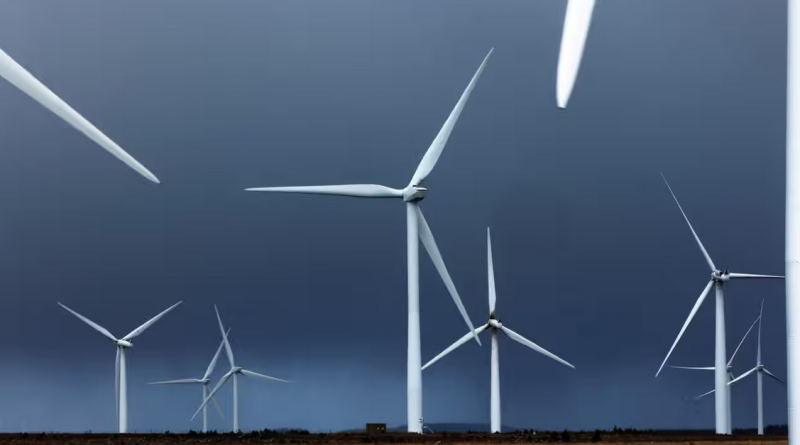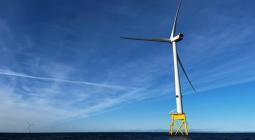Electricity ‘superhighway’ between Scotland and England to go ahead

Causeymire windfarm in Caithness, Scotland. The Eastern Green Link cable will transmit electricity from Peterhead to the south to northern England. Photograph: Murdo MacLeod/The Guardian
Great Britain’s energy regulator has given the green light to a £4.3bn low-carbon electricity “superhighway”, which will carry renewable power for 300 miles from north-east Scotland to the north of England.
The first phase of the Eastern Green Link subsea power cable, the longest in Great Briain, will have the capacity to transmit enough renewable electricity from Scotland’s windfarms to power 2m homes in England, according to Ofgem.
The single largest investment in Great Britain’s electricity grid to date, which will be paid through energy bills, is the first of 26 big energy grid projects which the regulator, Ofgem, plans to fast-track so more homes can benefit from the UK’s growing number of offshore windfarms.
Work is expected to begin on the project, which is being developed by SSE in partnership with National Grid, later this year before it starts transmitting power by 2029. A second project, spearheaded by Scottish Power and National Grid, is expected to receive approval from the regulator within weeks.
The plans are “vital to upgrade the energy system and allow more renewable energy to be brought on to the grid”, according to Ofgem. They also represented “a big step” towards the new government’s plan to create a net zero electricity system by 2030, it said.
The regulator is expected to approve record levels of power cable projects in the coming years to upgrade the grid so it can carry enough renewable electricity to meet Britain’s legally binding climate goals. However, the plans have raised concerns in many rural communities over the impact new transmission projects will have on the countryside.
Lawrence Slade, the chief executive of Energy Networks Association, which represents the UK’s electricity network operators, said: “To move us forward towards clean power will require the biggest upgrade to the grid in decades. In turn these projects will unlock jobs, secure work for contractors and suppliers, and ultimately mean more secure energy supplies in the future. This is a crucial part of that jigsaw.”
Ricky Saez, the director of the project, added that it would “play a major role in bolstering energy security and contributing to net zero targets” while providing a lasting legacy in local communities by supporting local environmental initiatives that enhance community wellbeing.
“This is a commitment that will continue throughout the lifetime of the project and beyond, as we aim to be a positive force in the communities we operate,” Saez said.
Ofgem said its fast-track scheme to accelerate the rollout of new grid infrastructure before the government’s 2030 clean electricity target had helped speed up the Eastern Green Link by up to two years. It has also called on the developers to find £79m in savings to help reduce the costs of the project.
Jonathan Brearley, the Ofgem chief executive, said: “Streamlining the process does not mean blank cheques for developers as we are able to step in and make financial adjustments to maximise efficiency and consumer benefit.”
Most of the Eastern Green Link cable project, which will run between Peterhead in Aberdeenshire and a new converter station at the Drax power station in North Yorkshire, will run under the seabed along Britain’s east coast.
Only about 44 miles of the cable will be onshore but the regulator has approved plans to bury the cabling, which will connect to converter stations at either end to plug in to the grid, where it will connect to homes and businesses in Yorkshire.




